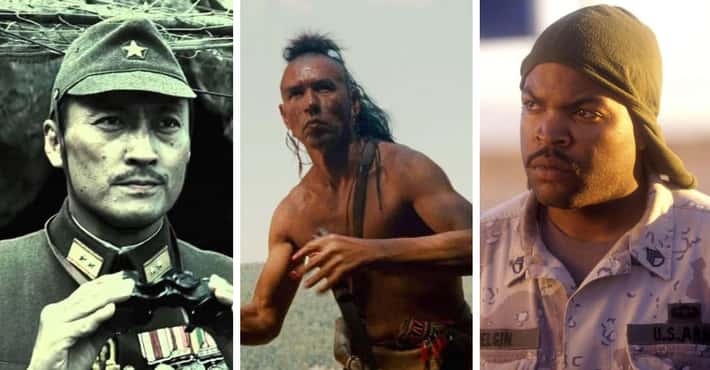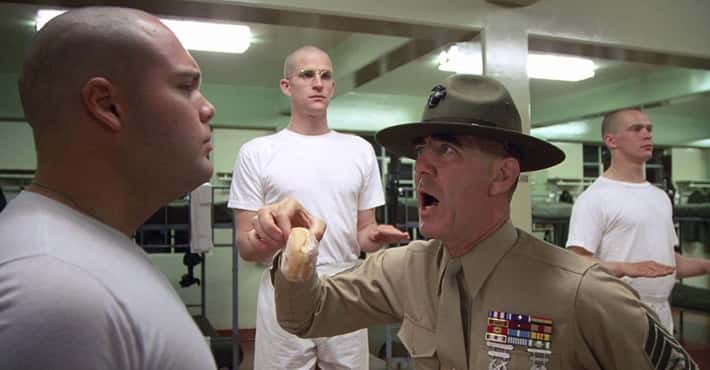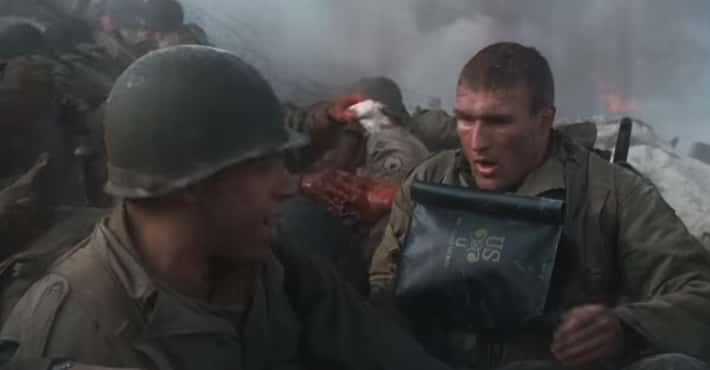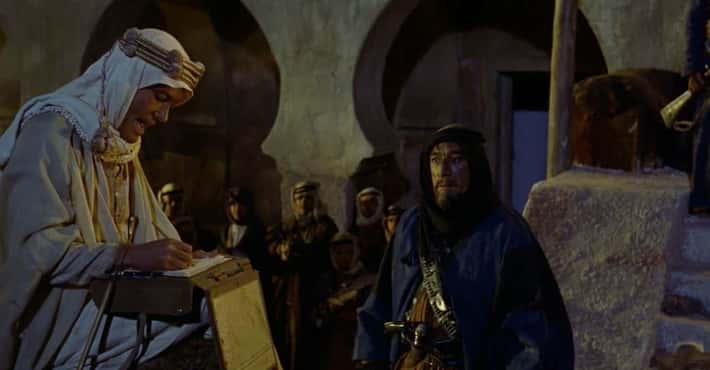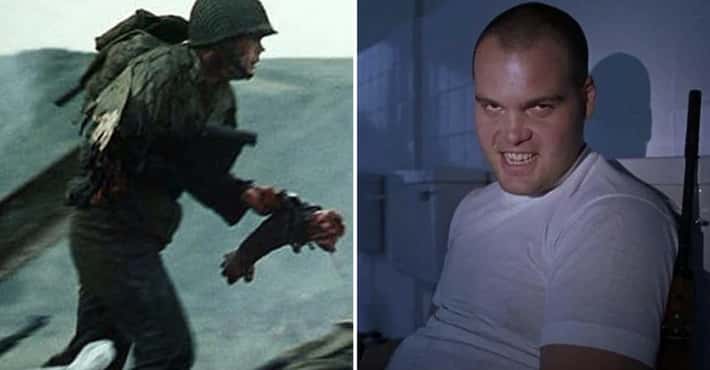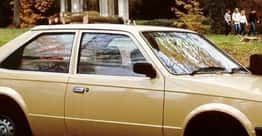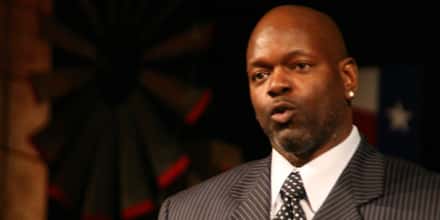Unbelievable Stories From Behind The Scenes Of 'The Deer Hunter'
A Helicopter Mishap Left Robert De Niro And John Savage Dangling 60 Feet Above A River
Photo: Universal PicturesDespite the ambition of the film's stunts, Robert De Niro and John Savage eagerly threw themselves into the process. During the bridge sequence - in which their characters nearly escape their river prison - their commitment to realism came close to calamity.
Due in part to Thailand's lack of a formal film infrastructure, the production had to rely on helicopter pilots who were not trained for film work - inexperience that ultimately put the cast at significant risk. The closest call came when the pilot for the rescue sequence nearly caught his helicopter skids in the rope handholds of the bridge on which De Niro and Savage were standing. The sequence was such a botch that the pilot also sliced through the actors' safety cables with his rotors, leaving De Niro and Savage dangling below the helicopter's cabin nearly 60 feet above the river.
Their final fall capped a stunt that came close to ending them.
The Cast Almost Drowned, And Footage Was Sacrificed To Save Them
Photo: Universal PicturesRobert De Niro, John Savage, and Christopher Walken's lives were nearly lost while filming The Deer Hunter's famous log scene. The three were holding onto loose logs as they floated down the River Kwai, but eventually, the water's choppiness trapped Savage behind a massive tree trunk.
When the rolling motion nearly forced Savage underwater, De Niro managed to make a last-second adjustment, rescuing him. Camera operators tracking the action ultimately dropped a camera - film and all - out of the boat while working to free the actors. Their lost footage never resurfaced.
Local Opportunists Targeted The Cast
Photo: Universal PicturesWhile Robert De Niro, John Savage, and Christopher Walken's star power certainly helped sell the final film to audiences, it was quite the liability on set. According to John Savage, the trio's prominence was of particular interest to Thailand's roving militants, who saw them as an opportunity to make a quick buck.
The looming risk of losing any one of his stars led Michael Cimino to hire armed guards for the production, ensuring the talent wouldn't be lost to the jungle.
The Film Went Over Budget Almost Immediately
Photo: Universal PicturesThe first hour of The Deer Hunter is dedicated to establishing the relationship among Robert De Niro, Christopher Walken, and the rest of the characters, mainly through an extended wedding sequence. This opening act's production only foreshadowed the scale of Michael Cimino's excesses.
Reportedly, Cimino filmed a considerable amount of material for the set piece, partly due to his lack of a clear story goal. In the end, De Niro and John Cazale's characters stumble to the floor after a marathon dance. This moment was not scripted - the two only collapsed after exhaustion as a result of Cimino's aimless, take-upon-take direction. Though the movie was only halfway through principal photography at the time, the sequence put it well over its initial budget.
Michael Cimino's Hubris And Many Changes Of Location Elevated Costs Even Further
Photo: Universal PicturesWhile filming on location is always expensive, making a war movie in Thailand with a half-proven director and stacked cast is a near-perfect recipe for going broke. At the time production got underway, Michael Cimino had only directed one other film - the caper Thunderbolt and Lightfoot.
The Deer Hunter dwarfed Cimino's freshman film in both ambition and scale, and the excesses Cimino exhibited in the wedding sequence unsurprisingly made another appearance when they began rolling again halfway around the world. Expensive effects, such as those required for the helicopter/bridge sequence, helped drive the budget from its original $7 million to its final $15 million. Fortunately, despite its unwieldy runtime (the theatrical cut runs over three hours), the film made back every cent and then some.
They Ruined Local Vegetation To Mimic Winter In An Industrial Town
Photo: Universal PicturesFilming began in the middle of summer, and the dense, post-spring Pennsylvania forests surrounding the establishing-sequence steel mill displayed as much. To achieve the sparse, wintery effect the opening demanded, the production opted to defoliate trees and spray the grass with a chemical compound intended to give them a brown, wilted look.
The production's capable greenskeeper went to work adjusting the native greenery, all the while risking the long-term health of a good deal of plants. Fortunately, much of his work proved reparable, as locals reported the defoliated trees re-leafed the following year.
A Live Round Was In The Cylinder During The Russian Roulette Sequence
Photo: Universal PicturesDeploying real-world stressors to achieve in-story performances has a long history in filmmaking. Alfred Hitchcock famously antagonized his actresses off-camera before capturing some of their most horrific scenes; William Friedkin filmed the famed French Connection car chase without permits; and, in 2015, Kurt Russell was allowed to break an actual vintage Martin guitar while cameras were rolling on The Hateful Eight - the producers kept Jennifer Jason Leigh's candid reaction in the film.
The Deer Hunter provides yet another example of this phenomenon. To heighten his performance, Robert De Niro insisted on keeping a live round in the revolver while filming the sequence. Fortunately, everybody was okay in the end, but the added risk undoubtedly impacted the performances of all involved.
A Venomous Snake Made Its Way Onto The Set And Crawled Up John Savage's Leg
Photo: Rushen / Wikimedia Commons / CC BY-SA 2.0Given just how many location-related headaches the production suffered, an insidious snake making its way on set and nearly biting a cast member sounds like an unideal cherry on top. In a 2018 interview, John Savage recounted that Robert De Niro spotted a Thai banded krait on set only after it had secured itself around Savage's leg.
Fortunately, a cool-headed crewmember removed and eradicated the intruder before it had the chance to delay production with a bite.
The Famous Six-Shooter Scene Had No Basis In Reality
Photo: Universal PicturesWhile its thematic force in the world of the film is hard to deny, Michael Cimino's use of the dangerous game of chance remains the most controversial element of The Deer Hunter. Purportedly, he encountered newspaper reports of it being forced upon American POWs during the Vietnam conflict. Upon the film's release, however, no reporters managed to find any documented case of the game, despite Cimino's claims.
Critics of the film continue to point to the revolver roulette sequences as the worst of the film's fabrications, noting they function purely to vilify the Vietcong while elevating the Americans, who read as nothing but pawns being subjected to undue cruelty.
John Cazale Succumbed To Bone Cancer Before The Film's Release
Photo: Universal PicturesAs careers go, John Cazale's was undeniably impressive. At the time of his passing, he had appeared in only five features, each of which stands today as seminal works of the '70s: The Godfather, The Godfather II, Dog Day Afternoon, The Conversation, and, of course, The Deer Hunter.
He perished shortly after wrapping his work on Cimino's film. Fortunately, the production rearranged its schedule specifically to accommodate him, as he was already diagnosed with the disease by the time filming was set to begin. Due to his condition, he was initially uninsurable, but his co-star Robert De Niro paid his bond to get him in the movie. Cazale never got to see the final cut, as he succumbed to his condition in March 1978, nine months before the film's release.
Meryl Streep Stood By Her Partner, John Cazale, As He Filmed His Last Movie
Photo: Universal PicturesIn addition to being uninsurable due to his cancer diagnosis, John Cazale's appearance in the film likely wouldn't have happened if his co-star and partner at the time, Meryl Streep, hadn't advocated for him. The studio was worried enough about his health to push for a replacement, but Michael Cimino and Streep both said they would leave the film if Cazale wasn't kept on board.
Streep and Cazale had been together for three years when production began, and she stood by him. John Savage, as well as the rest of the cast, made a point to spend time with him and Streep off the set, noting their spirits remained high despite Cazale's grim prognosis.
The Script Led To Additional Drama
Photo: Universal PicturesWhile the final script had only one credited screenplay writer, Deric Washburn, its four "story by" credits attest to the long road that led to its ultimate form. What became The Deer Hunter started as The Man Who Came to Play, a high-stakes gambling movie set in Las Vegas and centered on Russian Roulette.
The record company EMI acquired the script and, after preliminary talks with Michael Cimino, the setting was changed to the jungles of Vietnam. Over the course of an allegedly booze-filled burst of writing, Washburn collaborated with Cimino on a script that Cimino would eventually claim as his own work. Though the two essentially drew their lines, the Writers Guild awarded Washburn sole screenplay credit.
Some Of The Most Important Pennsylvania Scenes Were Filmed In Washington State
Photo: Universal PicturesMichael Cimino's exacting vision for the film led him and his location scouts to cobble together their fictionalized version of Clairton, PA - the real steel town from which the characters hail - through a piecemeal assembly process.
What ultimately appeared on screen was a composition of sequences filmed in West Virginia, Pennsylvania, Washington state, and Ohio. Of the four, Washington served as the setting for some of the film's most significant elements, including the titular deer hunt. Land in proximity to Washington's US-Canada border stood in for the nearby Allegheny Mountains.
The Film's Liaison In Thailand Was A Former Military Commander
Photo: Norman Peagam / Wikimedia Commons / CC BY 2.0Due in part to the lingering instability from the political conflict the film dramatizes, Vietnam was not a tenable filming location for The Deer Hunter. The production opted to use Thailand's dense jungles as a stand-in, but doing so required permission from the Thai government.
To secure this permission, Barry Spikings, one of the film's producers, contacted the local general Kriangsak Chomanan. Chomanan not only delivered permits, but he also furnished the production with actual arms, which he had to repossess temporarily to supply a coup. He returned the arms shortly afterward, allowing filming to continue.
One Of The Hunted Deer Had A Fairly Illustrious Career
Photo: Universal PicturesIn his book Blade Runners, Deer Hunters, and Blowing the Bloody Doors Off, producer Michael Deeley recounts his time working on the film. While much of the lore surrounding the production of Michael Cimino's epic certainly owes to the mythologizing of Deeley and company, one element that remains a curiosity is the provenance of the deer used in the hunting sequences.
In one famous first-act scene, Robert De Niro's character wanders in isolation before squaring off with a staggering buck, whom he ultimately chooses to release. The buck's resume was hardly insubstantial - in addition to his work on the Best Picture Oscar-winning film, he also starred in a commercial for a Connecticut-based insurance company.
Michael Cimino Apparently Lied About His Military Service
Photo: Universal PicturesVietnam correspondent for The New York Times, Tom Buckley corroborated in 1979 that Michael Cimino did, at one point, serve as a medic, but the director, who did little to quell assumptions that he was a veteran of Vietnam on set, never had any affiliation with the Green Berets and was only active as a medic for six months in 1962. Cimino argued that he never lied and rumors spread he intended to sue Buckley for his statements, though as far as anyone knows, that never happened.
It is not entirely clear whether Cimino ever directly lied about his miliary service to the cast and crew of The Deer Hunter, but his involvement with the war is still vaguely understood decades after the film's release. Even his close associates are not entirely sure what the extent of his service really was as Cimino was never specific about it. Many people believed he drew on personal experience for The Deer Hunter, but as producer Joann Carelli says, "It’s hard to tell with Michael."
Cimino's friend and work associate Deric Washburn went so far as to call Cimino a pathological liar. He told Vanity Fair, "I don’t think he ever knew where [the truth] was. A compulsive liar doesn’t know he’s lying. [But] the movie never would have gotten made had he not been."


















